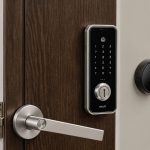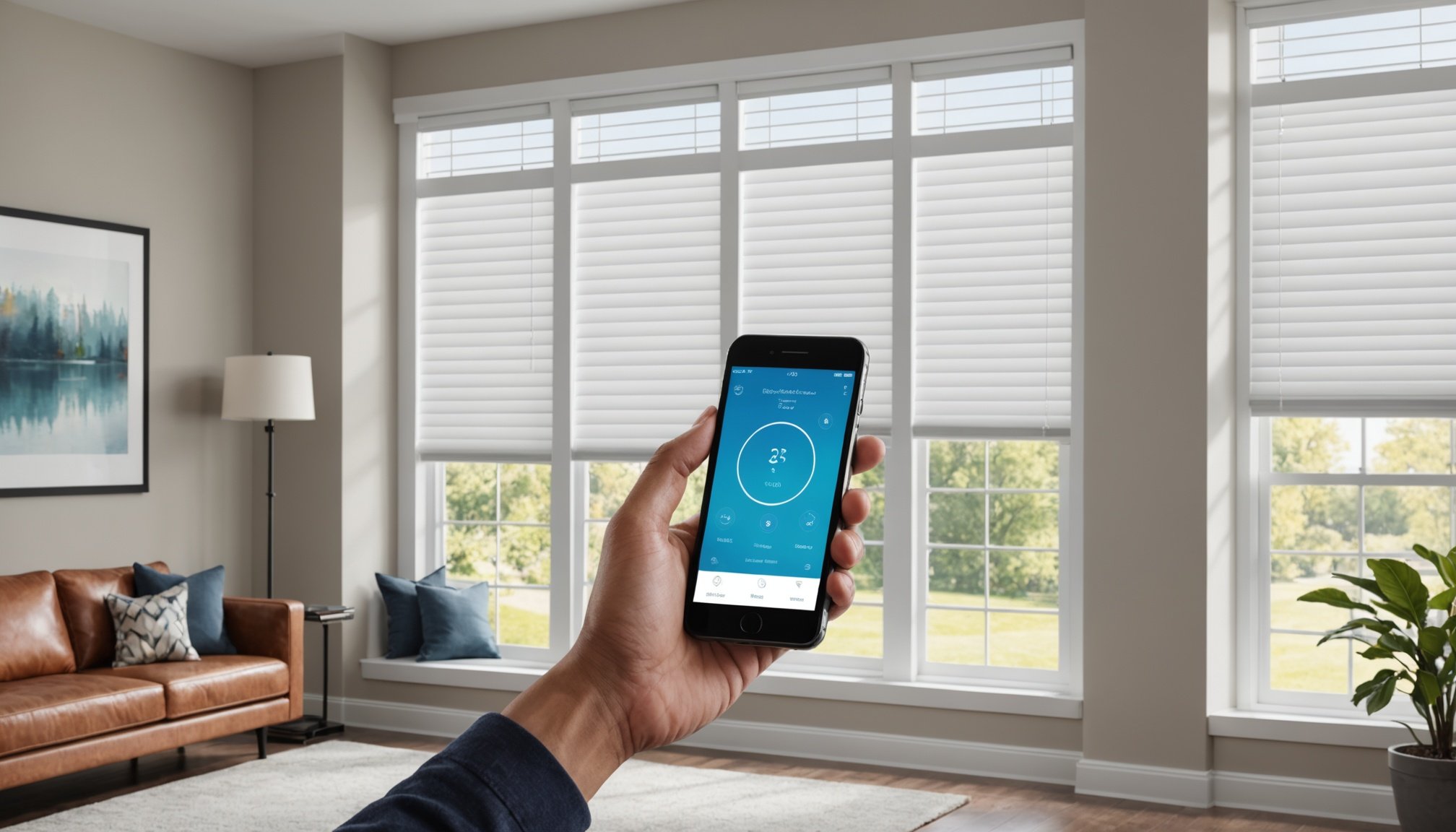Overview of Smart Home Window Treatments
Smart home technology is continuously evolving, offering homeowners efficient and convenient solutions. Smart window treatments such as blinds, shades, and curtains are popular examples that enhance comfort and energy savings. These automated systems are designed to integrate seamlessly into your home environment, providing both functionality and style.
Smart window treatments are tailored to respond to environmental cues, such as sunlight intensity or time of day, allowing for optimal indoor light management. This adaptability can result in significant energy savings, as they help regulate indoor temperature. By minimizing unwanted heat gain or loss, smart window coverings can reduce the reliance on artificial heating and cooling systems.
In the same genre : Revolutionize your grocery experience: utilize ai-powered smartphone tips for smarter shopping!
There are several popular types of smart window treatments:
- Blinds: Often made from materials like wood or faux wood, they offer varying levels of light control and privacy.
- Shades: Available in different opacities and styles, shades can be tailored to match your home’s aesthetic while managing sunlight effectively.
- Curtains: Provide a more traditional look, and when motorized, offer the convenience of remote or automated control.
In the context of modern homes, the importance of energy savings cannot be understated. Smart window coverings play a crucial role in creating sustainable and energy-efficient living spaces by reducing energy consumption and subsequently lowering utility bills.
Also read : Elevate your home security: seamlessly control your smart lock with your smartphone
Energy Saving Benefits of Smart Window Treatments
Smart window treatments enhance energy efficiency by utilizing advanced technologies to manage sunlight and temperature within homes. Automated timing mechanisms are pivotal in reducing heating and cooling costs. By scheduling blinds or shades to open during cooler morning hours and close during peak sunlight, homes can maintain comfortable temperatures naturally. This reduces reliance on HVAC systems, leading to significant cost savings.
Sensors also play a critical role by offering real-time sunlight control. For instance, light sensors can automatically adjust shades based on the sun’s intensity, optimizing natural light without overheating rooms. This precise management ensures that homes remain well-lit while minimizing excessive heat gain, further contributing to energy efficiency.
Numerous case studies underline the tangible energy savings achieved through these technologies. Homeowners often report reductions in energy bills as high as 30%, showcasing the financial benefits of smart window treatments alongside their environmental advantages. These cost savings stem from the reduced need for artificial heating and cooling, proving the practicality of investing in such technologies.
Incorporating smart window treatments not only conserves energy but also supports environmentally friendly living, making them an asset for modern, energy-conscious households seeking to reduce their carbon footprint.
Smartphone Management of Window Treatments
Smartphone apps significantly enhance the convenience of managing window treatments. They offer an intuitive user interface allowing for seamless control. Many popular apps provide features like remote operation, schedule setting, and integration with smart home systems, transforming how you interact with your home’s ambiance.
While exploring various apps, prioritize those with a user-friendly interface. This ensures easy navigation and minimizes frustration during use. Look for features such as drag-and-drop scheduling, which simplifies personalizing the operation of your window treatments. Some apps even offer voice command integration, allowing hands-free control.
Setting schedules and preferences through these apps enhances comfort and energy efficiency. With the help of app-based controls, users can automate blinds to open or close at specific times, matching their daily routine. This not only maximizes natural light usage but also regulates indoor temperature effectively, contributing to energy savings.
Moreover, mobile apps offer personalised settings for different rooms or entire homes. This means you can have varying schedules tailored for each space, adopting a zoning approach. Mobile app control ensures your window treatments are responsive to your lifestyle, providing a seamless blend of technology and comfort in daily life.
Smart Window Treatment Integration with Home Automation
Smart home systems make living spaces more efficient and comfortable by automating everyday tasks. Integration of smart window treatments into these systems allows users to control blinds, shades, and curtains remotely. This feature is particularly useful in regulating the amount of natural light and maintaining privacy in homes.
Overview of Home Automation Systems
Several popular home automation systems such as Amazon Alexa, Google Home, and Apple HomeKit specialise in managing compatibility between various smart devices. They provide a central control point to manage lighting, heating, cooling, and now, even window treatments. These systems use specific integration protocols to connect different brands and types of smart products, ensuring seamless operation within the smart home ecosystem.
Benefits of Integration
Integrating smart window treatments with home automation systems enhances energy efficiency by allowing for automatic adjustments based on time or temperature settings. Interconnected smart devices create an ecosystem where compatibility maximises the utility and convenience of smart homes. It results in reduced energy consumption, increased security, and improved comfort.
Compatibility with Other Devices
Smart window treatments can be paired with security systems to simulate occupancy, even when residents are away, enhancing home safety. They also interact efficiently with thermostats to control indoor climate by adjusting according to sunlight and temperature. Ensuring device compatibility means that your smart home can seamlessly adapt to your lifestyle needs.
Product Recommendations for Smart Window Treatments
Smart window treatments are revolutionising the way we manage natural light and temperature in our homes. From energy efficiency to sheer convenience, they offer compelling benefits. When selecting the best smart blinds, it’s important to focus on industry-leading brands renowned for innovation and reliability.
Lutron and IKEA, for instance, are top-tier brands offering robust products with impressive user satisfaction. Lutron shades are celebrated for their seamless integration with existing smart home systems, enhancing ease of use. IKEA’s FYRTUR blinds, on the other hand, are applauded for their affordability and user-friendly installation.
Each product’s energy efficiency and user interface can significantly affect usability and customer satisfaction. Features like scheduling and remote control are pivotal in boosting energy savings while offering added convenience. Moreover, smart integrations with platforms like Alexa or Google Assistant further enhance functionality.
Reading customer reviews is invaluable. Real-world users provide insights on reliability, installation, and daily interaction. Reviews often highlight hidden strengths or weaknesses of smart blinds, guiding consumers to make informed decisions. For many, user ratings serve as a tipping point in the decision-making process, ensuring the chosen product truly meets their needs.
Ultimately, a blend of trusted brands, desirable features, and high ratings leads to a satisfying purchase experience.
Visuals and Tutorials for Smart Window Treatments
When it comes to mastering smart window treatments, having the right resources at your fingertips makes all the difference.
Step-by-Step Installation Guides
Installation guides for various types of smart window treatments are essential. They provide clear instructions, ensuring a hassle-free process. Typically, installation guides include:
- Tools needed for the job
- Precise measurements
- Detailed steps for installing devices
Such guides are crucial for those who are unfamiliar with the installation process and help prevent common errors.
Video Tutorials for App Usage
Video tutorials are invaluable resources for learning how to navigate the applications associated with smart window treatments. They typically demonstrate:
- Connecting the app to your smart devices
- Customising schedules for your window treatments
- Integrating with other smart home systems
These visual aids simplify the process, making app usage more intuitive and user-friendly.
Infographics on Energy Savings
Infographics offer a visual approach to understanding how smart window treatments contribute to energy savings. They illustrate:
- Potential reduction in heating and cooling costs
- The impact of smart technologies on energy efficiency
- Comparisons between smart and traditional window treatments
By providing engaging and informative graphics, users can better appreciate the benefits of smart window treatments.
Frequently Asked Questions about Smart Window Treatments
Smart window treatments are an innovative addition to modern homes, offering convenience and energy efficiency. Here, we address common queries surrounding their installation and use.
Installation and Maintenance Concerns
One of the most frequent questions involves installation. Homeowners often wonder if they can install these devices themselves. The answer is yes; most systems come with detailed instructions, making self-installation feasible. However, for complicated systems, professional installation is advisable to prevent damage and ensure proper operation. Regular maintenance involves simple steps like dusting blinds and ensuring the track is clear of obstacles.
Troubleshooting Smartphone Connectivity
Connectivity problems can arise when integrating smart window treatments with smartphones. If your device isn’t syncing, check the Wi-Fi connection first. It’s essential to ensure your phone and smart blinds operate on the same network. Updating the device firmware can also resolve connectivity issues. If problems persist, consult the manufacturer’s guidelines or customer support.
Optimizing Settings for Energy Efficiency
For maximum energy efficiency, configure your smart window treatments to adjust based on the time of day and weather conditions. Many systems offer automation features to help optimize these settings. Keeping blinds closed during peak sun hours can significantly reduce cooling costs, while open blinds during the winter can help capture natural warmth.











